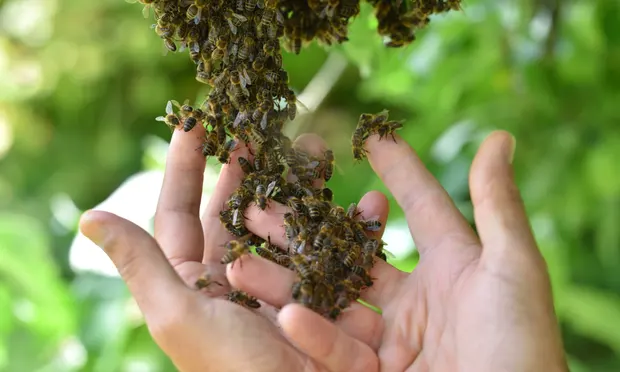. 
This article in The Guardian newspaper is wonderful in that it highlights the devastation that the wild honeybee in the UK has suffered over the last 150 to 200 years. Thousands of rare forest honeybees have recently been discovered in the ancient woodlands of Blenheim Palace. The newly discovered subspecies, or ecotype, of honeybee is smaller, furrier and darker than the honeybees found in managed beehives and is believed to be related to the indigenous wild honeybees that foraged the English countryside for centuries. These bees must have been there from before man started to deforest the UK, mostly for Victorian ships and wooden buildings.
And now, this indigenous new subspecies, possibly the last enclave surviving in the UK, has been found in the Blenheim woods, surviving well and producing replicating swarms as they should do.
But the article doesn’t highlight the fact that there are many other federal colonies of bees in the UK and that we do know that they exist and there are many people studying them and that they not all just escapees from hobbyist beehives and commercial honey farms.
Hobbyist beehive queen bees have infiltrated the remaining wild federal stock because we import many thousands of young replacement queen bees from Australia, New Zealand and Italy. All those new queens used in UK beehive colonies are purely intended for the mass production of honey in jars and not intended to repopulate or renew the wild stock. There are no managed beehives on the Blenheim Palace estate, which may have played a critical role in the wild bees’ survival. It’s a closed environment, with very little human interaction in the woodlands, and is described as a paradise of biodiversity, with hope of the population growing.
So it’s not surprising that the generally held opinion of wild feral honeybees is that they’re all hybrids, alternatives to the real original stock of British honeybee. So let’s see if any more can be found and let’s connect with other people studying federal bees in the UK.
We really do need to find out how many wild honeybee nests there are and how we can best save these. Please follow BeesMAX and join us in our Wild Honeybee Conservation Project of renewal, rewilding and regeneration.